Affiliate disclosure: This post may contain affiliate links. Please see our Privacy Policy.
While you may have heard of dandelion wine, there’s another tiny yellow flower that comes up even earlier in the spring. Coltsfoot wine is made from the bright yellow flower petals and has a beautiful color and subtle taste. It also happens to be medicinal.
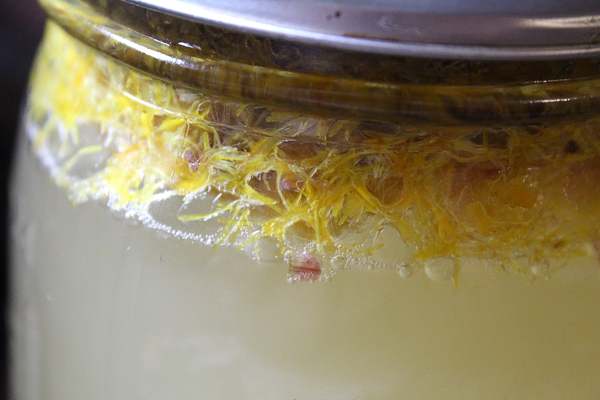
Coltsfoot is often mistaken for dandelion because the flowers are somewhat similar, but coltsfoot blossoms sprout alone, with no leaves. Without the characteristic dandelion leaves, coltsfoot flowers are easy to identify.
The flowers have a distinctive spicy flavor, with hints of wintergreen. That same flavor goes into the finished wine.
Medicinal Benefits of Coltsfoot
The botanical name is Tussilago farfara, and Tussilago comes from the Latin word for cough. Coltsfoot has been used as a remedy for respiratory issues for centuries. The most common way to take coltsfoot is as a coltsfoot tea, especially when combined with Mullen for extra medicine.
Beyond tea, it’s also made into other home cough remedies. Backyard Medicine notes, “Coltsfoot rock is an old-fashioned pleasant-tasting commercially available confection. This is a good way to persuade children to take a cough remedy. And coltsfoot was usually the first wildflower available to make a light wine, appearing even before cowslip.”
An early spring floral wine you say? I had to give it a try.
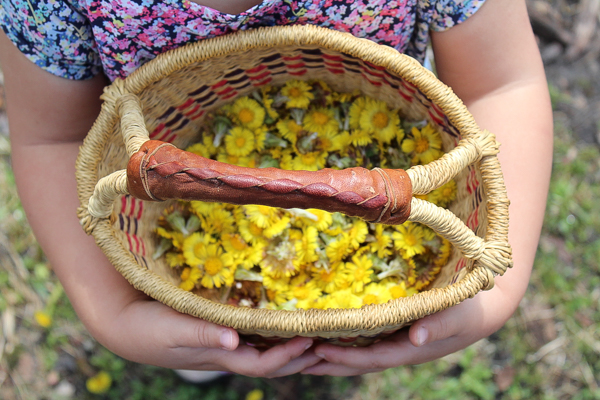
Making Coltsfoot Flower Wine
Start by collecting coltsfoot flowers. They tend to grow in waste areas or along roadsides. Just be sure it’s an area free of pollution.
These grow along the edge of one of the paths leading into our woods, so I know that area has never been sprayed.
Once you’ve collected about a quart of coltsfoot blossoms, pull the petals out and leave the green outer leaves. This actually goes rather quickly, and they pull apart much easier than dandelions. Pinch the back end of the coltsfoot flower and you can just about squeeze all the petals out the top.
A quart of coltsfoot blossoms yields about 2 cups of fluffy coltsfoot flower petals.
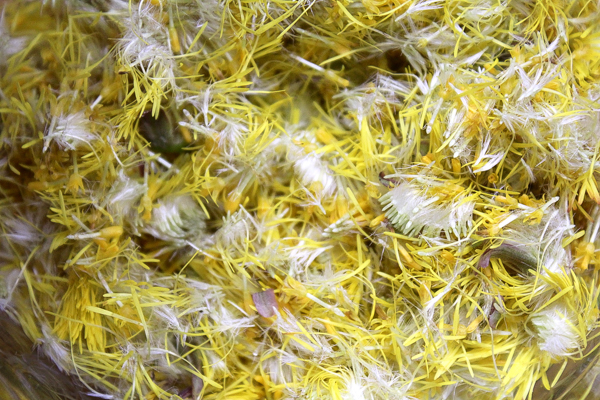
This recipe uses 2 cups of coltsfoot blossoms to make a quart of coltsfoot wine. A bit of extra flavor comes from the zest and juice of one orange.
Be sure to only use the outer zest of an orange, not the bitter inner white pith. A micro plane ensures you only get the zest, and it’s by far the easiest way to zest a citrus fruit.
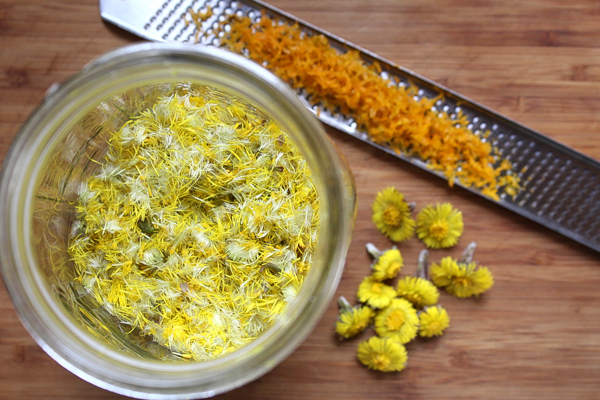
Bring 3 1/2 cups water to a boil and add 1 cup of sugar. Stir until dissolved, and allow it to cool completely. Add the cooled sugar water to the mason jar containing the citrus and coltsfoot flower petals.
Dissolve a small amount of wine yeast in a few tablespoons of water. Add the yeast to the jar, and seal with a mason jar fermentation kit.
There are a number of types of mason jar fermentation kits to choose from. I use one by Fermentools that looks a lot like a homebrew setup, and if you choose to do bigger batches later you’ll need the rubber stopper and water lock that are included in the kit. I’m hoping at some point to try out these silicone fermentation lids from Mason Tops because they look super easy to clean.
Making a small batch wine (one quart) is very much like making a small batch mead. In this post here I take you through all the specifics of crafting a small batch mead.
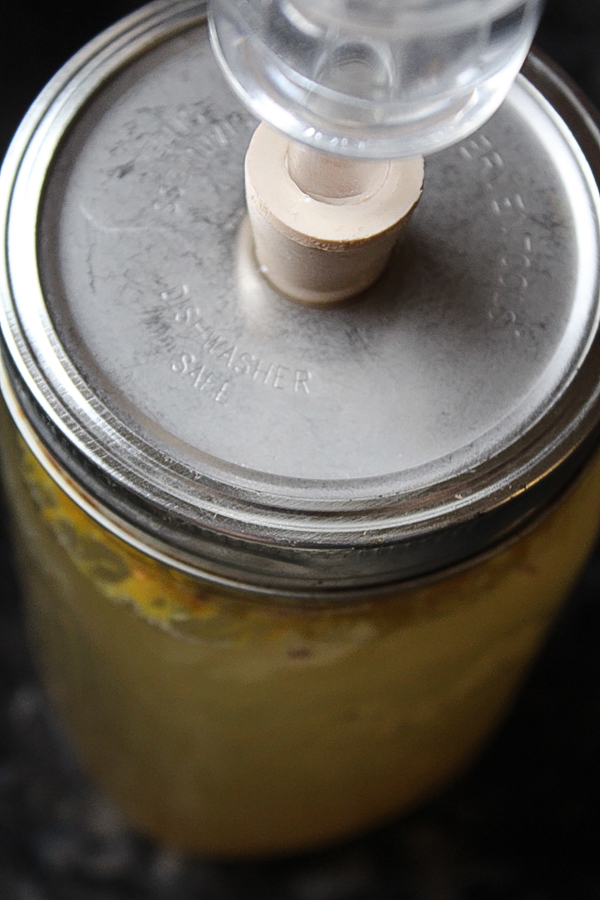
After 6 weeks of fermentation, slowly pour the whole mixture through a fine-mesh strainer to remove the flower petals. Be sure to pour slowly, so that the yeast sediment stays at the bottom of the jar.
Normally with a large batch, you’d use a siphon to transfer between containers so that all the sediment stayed at the bottom of the bottle. With such a small batch, pouring slowly is totally sufficient.
Bottle in a Grolsch flip cap bottle and allow it to age for at least a week before drinking.
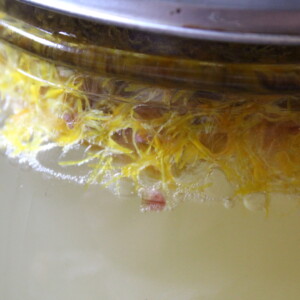
Coltsfoot Wine
Ingredients
- 2 cups coltsfoot flower petals
- 1 cup sugar
- 3 1/2 cups water
- 1 small orange, zest
- 1 tbsp orange juice
- 1 tsp lemon juice
Instructions
- Start by gathering the coltsfoot flowers and separating out the petals.
- Place the flowers in a wide mouth quart mason jar or whatever you're going to use as a fermentation vessel. Add the citrus juices and zest.
- Bring the water to a boil on the stove and add the sugar. Stir to dissolve.
- Allow the sugar water to cool to room temperature and pour it over the coltsfoot flowers and citrus.
- Add wine yeast and close with a mason jar fermentation kit.
- Allow to ferment at room temperature for about 4 to 6 weeks, until the fermentation has stopped.
- Carefully pour the wine off into another jar, leaving the sediment and dead yeast behind. Pour the wine through a mesh strainer to remove any remaining flower petals.
- Since it's a small batch, it's easiest to bottle it in flip top grolsch bottles rather than going through the trouble of corks. Bottle and seal and allow it to condition for at least a week before drinking.
Nutrition
Nutrition information is automatically calculated, so should only be used as an approximation.
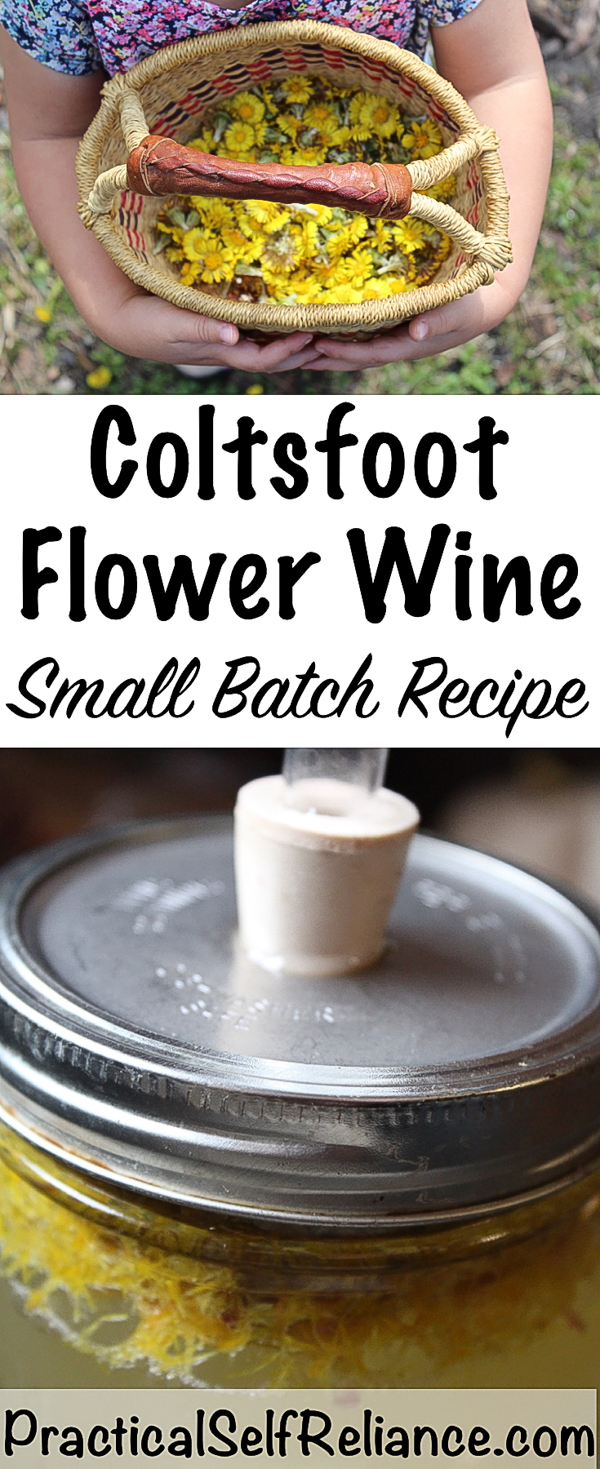



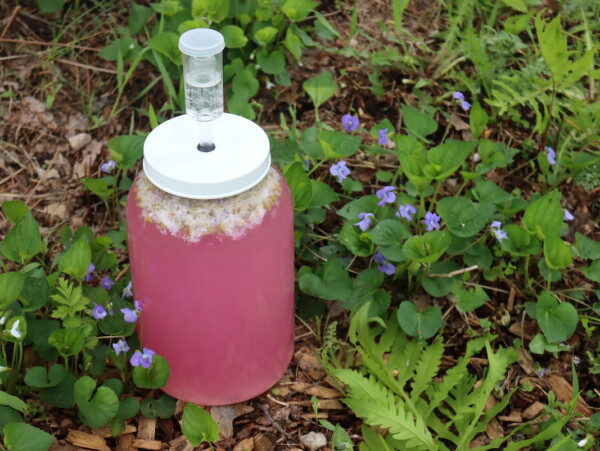
hay Ashley,
i Have been following along for some time now, and it seems to me as a homesteader, …. you have more
likely discovered, if you wash the sediment in the fermenter shake it up with just pure clean water, and then
filter it through fine cloth some of the yeast will pass through the cloth ready for a new job. I rinse it a two times and let it settle out to pour off the rinse water, then shake it up filter through cloth add water and sugar. put an air lock on till I have a use for them again. check and feed, now everything must sterile and care must be used. forgoing contamination there is no reason to need new yeast. but it’s character can change
How much is a “small amount or wine yeast?”
You do not need an entire packet since a packet is good for 1 to 5 gallons of wine. As you can see there is a lot of wiggle room here on the amount of yeast. For a small batch like this you could probably use 1/4 of a packet or less.